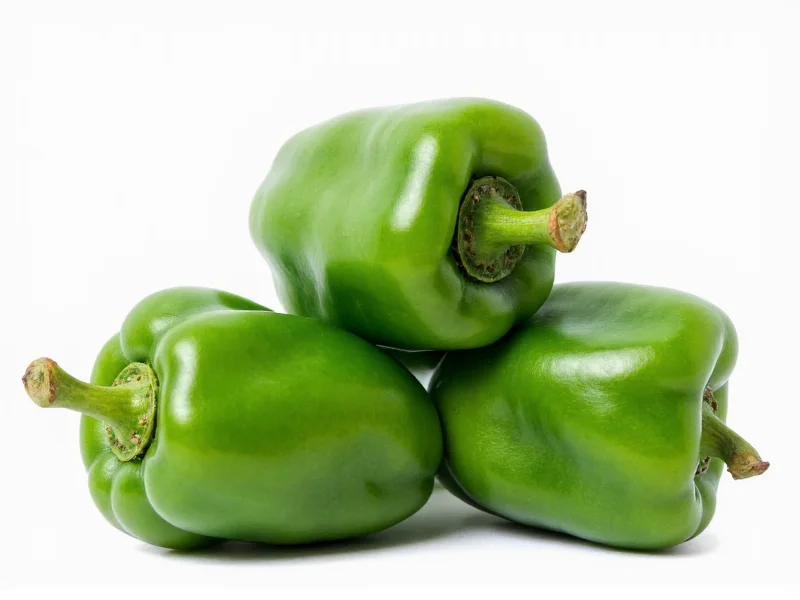When exploring the world of chili peppers, many home cooks and food enthusiasts wonder about the heat level of poblano peppers. Understanding exactly how spicy poblano peppers are helps you make informed decisions in the kitchen, whether you're preparing traditional Mexican dishes or experimenting with new recipes.
Understanding Pepper Heat Measurement
The spiciness of chili peppers is scientifically measured using the Scoville scale, which quantifies the concentration of capsaicinoids—the compounds responsible for that characteristic burn. Developed by pharmacist Wilbur Scoville in 1912, this scale assigns peppers a numerical value representing how many times the extract must be diluted before the heat becomes undetectable.
Modern testing uses high-performance liquid chromatography (HPLC) for more precise measurements, but the Scoville Heat Unit (SHU) remains the standard reference that consumers understand.
Poblano Pepper Heat Profile
Poblano peppers ( Capsicum annuum) register between 1,000-2,000 Scoville Heat Units when mature. To put this in perspective:
| Pepper Type | Scoville Heat Units | Relative Heat Level |
|---|---|---|
| Bell Pepper | 0 SHU | No heat |
| Poblano Pepper | 1,000-2,000 SHU | Mild heat |
| Jalapeño Pepper | 2,500-8,000 SHU | Moderate heat |
| Serrano Pepper | 10,000-23,000 SHU | Hot |
| Habanero Pepper | 100,000-350,000 SHU | Very hot |
This measurement places poblano peppers on the milder end of the chili pepper spectrum. When compared to the more familiar jalapeño, poblanos are generally about half as spicy. Many people who avoid spicy foods can comfortably enjoy dishes featuring poblano peppers without significant heat sensation.
Factors That Influence Poblano Pepper Heat
Several variables can affect how spicy your poblano peppers might be:
- Growing conditions: Stressors like inconsistent watering, temperature fluctuations, and soil quality can increase capsaicin production
- Ripeness: As poblano peppers mature and turn from dark green to reddish-brown (when they're called "ancho" peppers), their heat level can increase slightly
- Individual variation: Even within the same plant, heat levels can vary between peppers
- Seed and membrane concentration: The white pith and seeds contain the highest concentration of capsaicin
Interestingly, when poblano peppers fully ripen to red and are dried, they become ancho peppers, which maintain a similar heat range but develop a more complex, slightly sweeter flavor profile while retaining that mild heat characteristic.
Practical Implications for Cooking
The mild heat of poblano peppers makes them incredibly versatile in the kitchen. Unlike hotter peppers that can dominate a dish with their spiciness, poblanos contribute a subtle warmth that enhances rather than overwhelms other flavors.
Chefs and home cooks value poblano peppers for several reasons:
- They provide a gentle heat that most palates can enjoy
- Their thick walls make them excellent for stuffing (like in chiles rellenos)
- They have a rich, earthy flavor that complements many ingredients
- They blend well in sauces, soups, and stews without making the dish too spicy
If you're sensitive to spice but want to use poblano peppers in your cooking, simply remove the seeds and white membranes before using them. This reduces the heat level significantly while preserving the pepper's distinctive flavor.
Comparing Poblano to Similar Peppers
When determining if poblano peppers fit your heat tolerance, it's helpful to understand how they compare to other common varieties:
- vs Bell Peppers: Unlike completely non-spicy bell peppers (0 SHU), poblanos offer a subtle warmth while maintaining a similar thick-walled structure
- vs Jalapeños: Jalapeños (2,500-8,000 SHU) are noticeably hotter—typically 2-4 times spicier than poblanos
- vs Anaheim Peppers: These are very similar in heat (500-2,500 SHU), though Anaheim peppers tend to be slightly longer and thinner
- vs Cubanelle Peppers: Cubanelles are even milder (100-1,000 SHU), making them a good alternative if you want minimal heat
Understanding these differences helps you make appropriate substitutions in recipes based on your preferred heat level.
Handling Poblano Peppers Safely
Even though poblano peppers are mild, they still contain capsaicin, which can irritate skin and eyes. When preparing them:
- Wear gloves if you have sensitive skin or are handling multiple peppers
- Avoid touching your face, especially eyes, while handling peppers
- Wash hands thoroughly with soap after handling, even if you wore gloves
- Use separate cutting boards for peppers to avoid cross-contamination
If you accidentally get capsaicin on your skin, wash with soap and water, then apply milk or a dairy product to help neutralize the compound, as capsaicin is fat-soluble.
Common Culinary Uses for Poblano Peppers
The mild heat of poblano peppers makes them ideal for numerous dishes where you want pepper flavor without overwhelming spice:
- Chiles Rellenos: Stuffed poblano peppers are a classic Mexican dish
- Rajas con Crema: Sliced roasted poblanos in cream sauce
- Mole Sauce: Often includes dried poblano (ancho) peppers
- Guacamole: Adds subtle heat without overpowering the avocado
- Quesadillas and Enchiladas: Provides flavor without excessive heat
- Roasted Poblano Soup: A creamy, mildly spicy soup perfect for cooler weather
When roasting poblano peppers—a common preparation method—their skin blackens and blisters, which enhances their natural sweetness while maintaining their mild heat profile. After roasting, the skin is typically removed before using in recipes.











 浙公网安备
33010002000092号
浙公网安备
33010002000092号 浙B2-20120091-4
浙B2-20120091-4